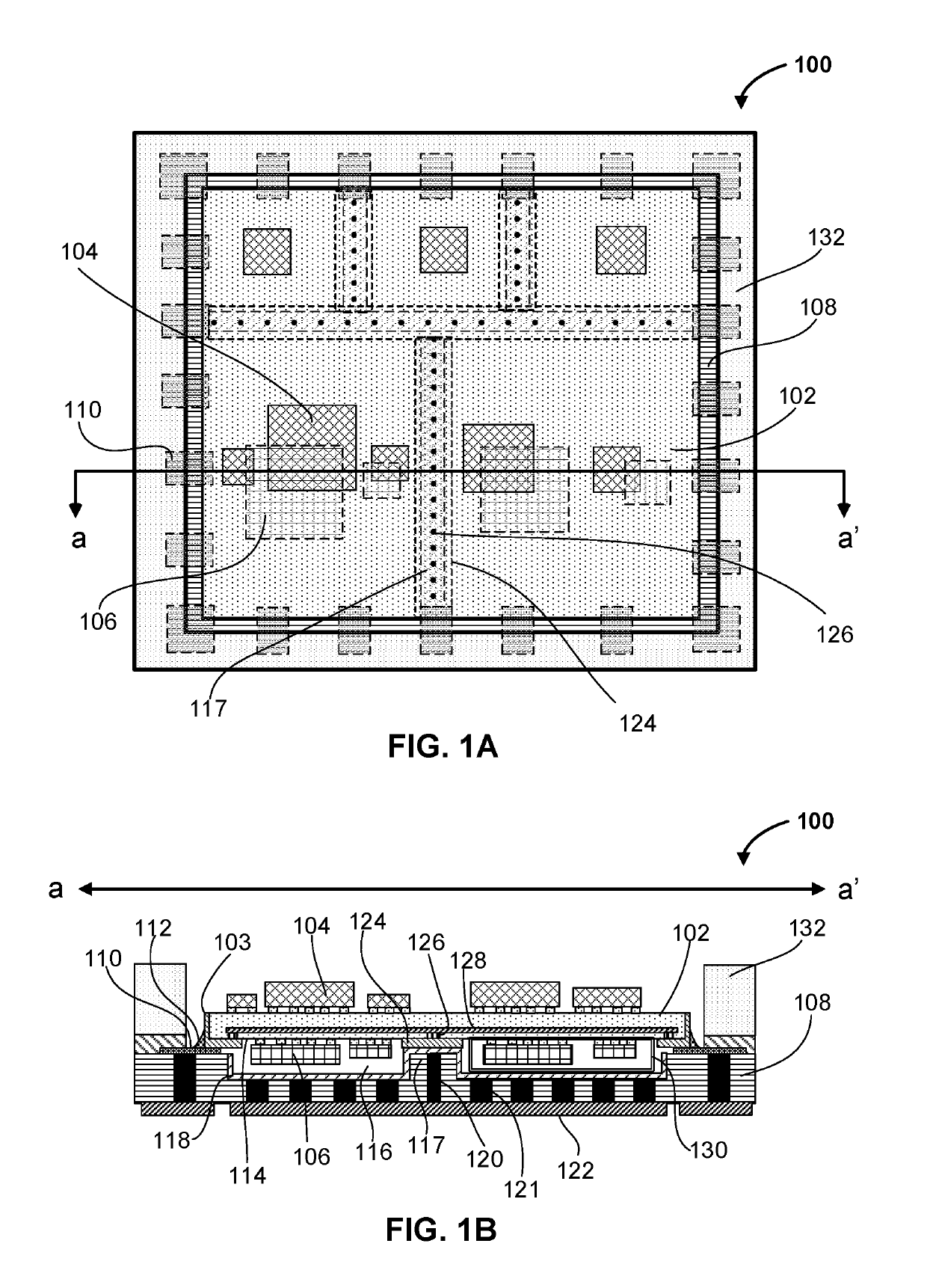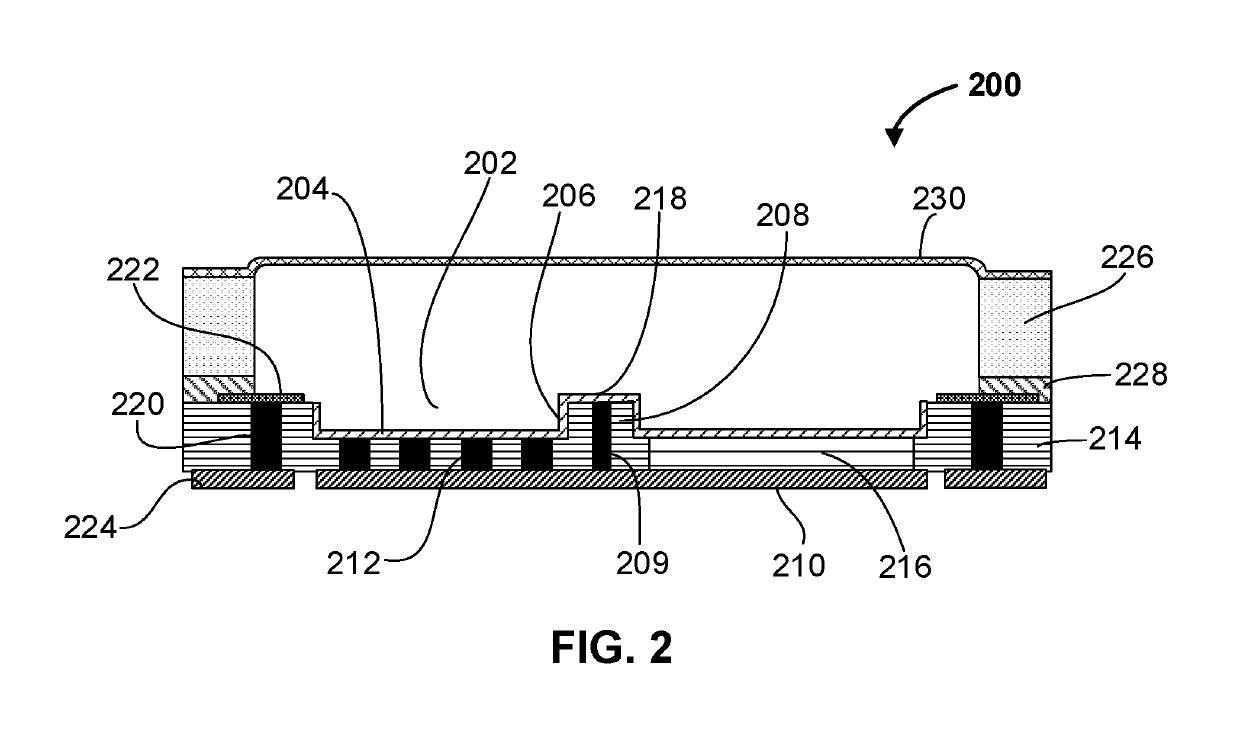EMI shielded integrated circuit packages and methods of making the same
a shielded integrated circuit and shielded technology, applied in the field of shielded integrated circuit packages and methods of making the same, can solve the problems of electromagnetic interference (emi) to signal integrity, interfere with the thermal profile necessary to achieve well-formed and reliable solder joints, and the inspection of solder joints becomes impossible, so as to reduce the area and volume, and minimize the dislocation of electromagnetic fields. , the effect of simplifying the full cleaning and inspection of both sides
- Summary
- Abstract
- Description
- Claims
- Application Information
AI Technical Summary
Benefits of technology
Problems solved by technology
Method used
Image
Examples
Embodiment Construction
[0024]EMI shielded integrated circuit interposer packages with interposer and circuit module assemblies and methods to form such semiconductor packages are described. In the following description, numerous specific details are set forth, such as packaging architectures and material regimes, in order to provide a thorough understanding of embodiments of the present invention. It will be apparent to one skilled in the art that embodiments of the present invention may be practiced without these specific details. In other instances, well-known features, such as via structure and integrated circuit design layouts, are not described in detail in order to not unnecessarily obscure embodiments of the present invention. Furthermore, it is to be understood that the various embodiments shown in the Figures are illustrative representations and are not necessarily drawn to scale.
[0025]Although interposer packages are known and have been used for many years, their function has generally been limi...
PUM
 Login to View More
Login to View More Abstract
Description
Claims
Application Information
 Login to View More
Login to View More - R&D
- Intellectual Property
- Life Sciences
- Materials
- Tech Scout
- Unparalleled Data Quality
- Higher Quality Content
- 60% Fewer Hallucinations
Browse by: Latest US Patents, China's latest patents, Technical Efficacy Thesaurus, Application Domain, Technology Topic, Popular Technical Reports.
© 2025 PatSnap. All rights reserved.Legal|Privacy policy|Modern Slavery Act Transparency Statement|Sitemap|About US| Contact US: help@patsnap.com



